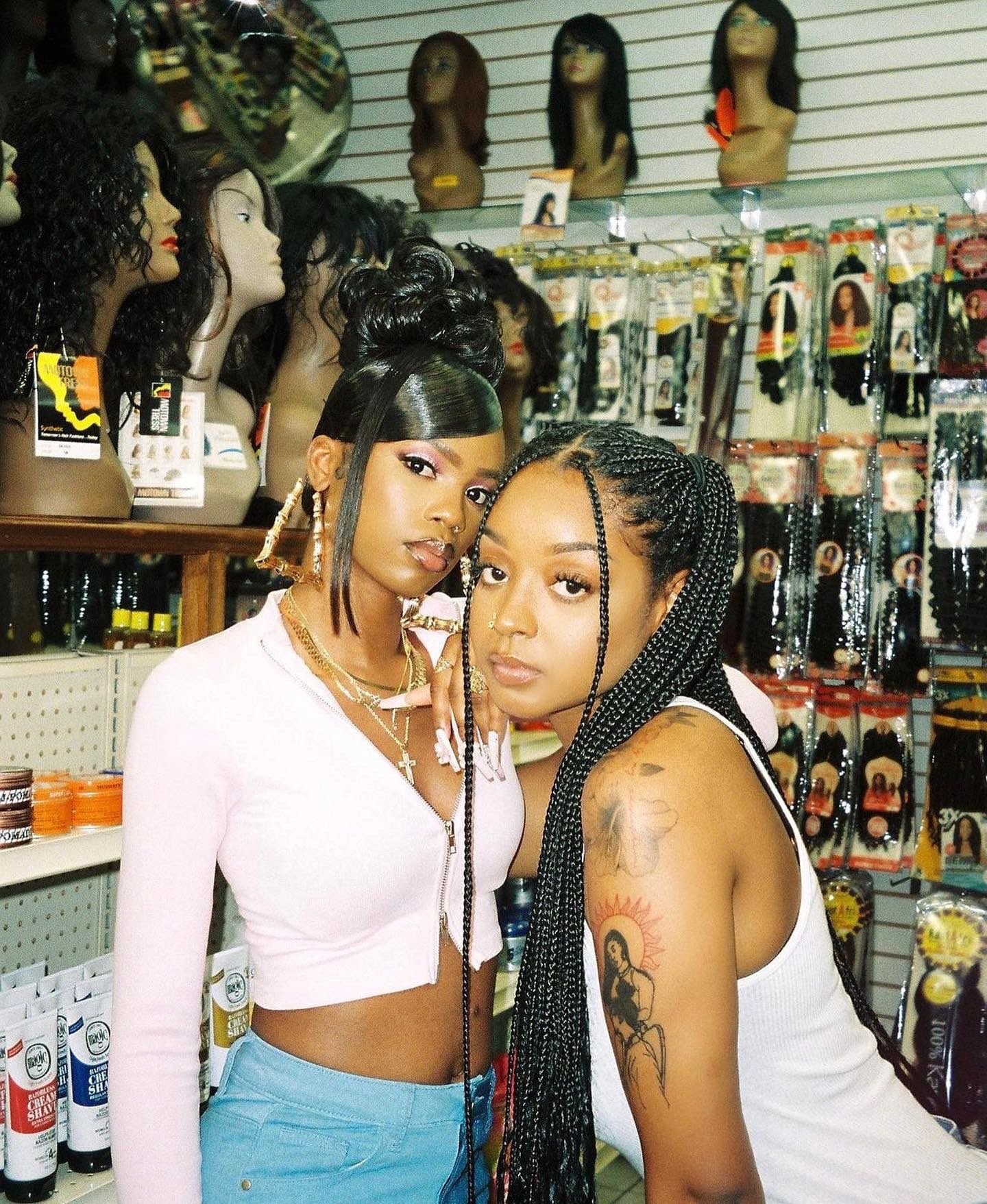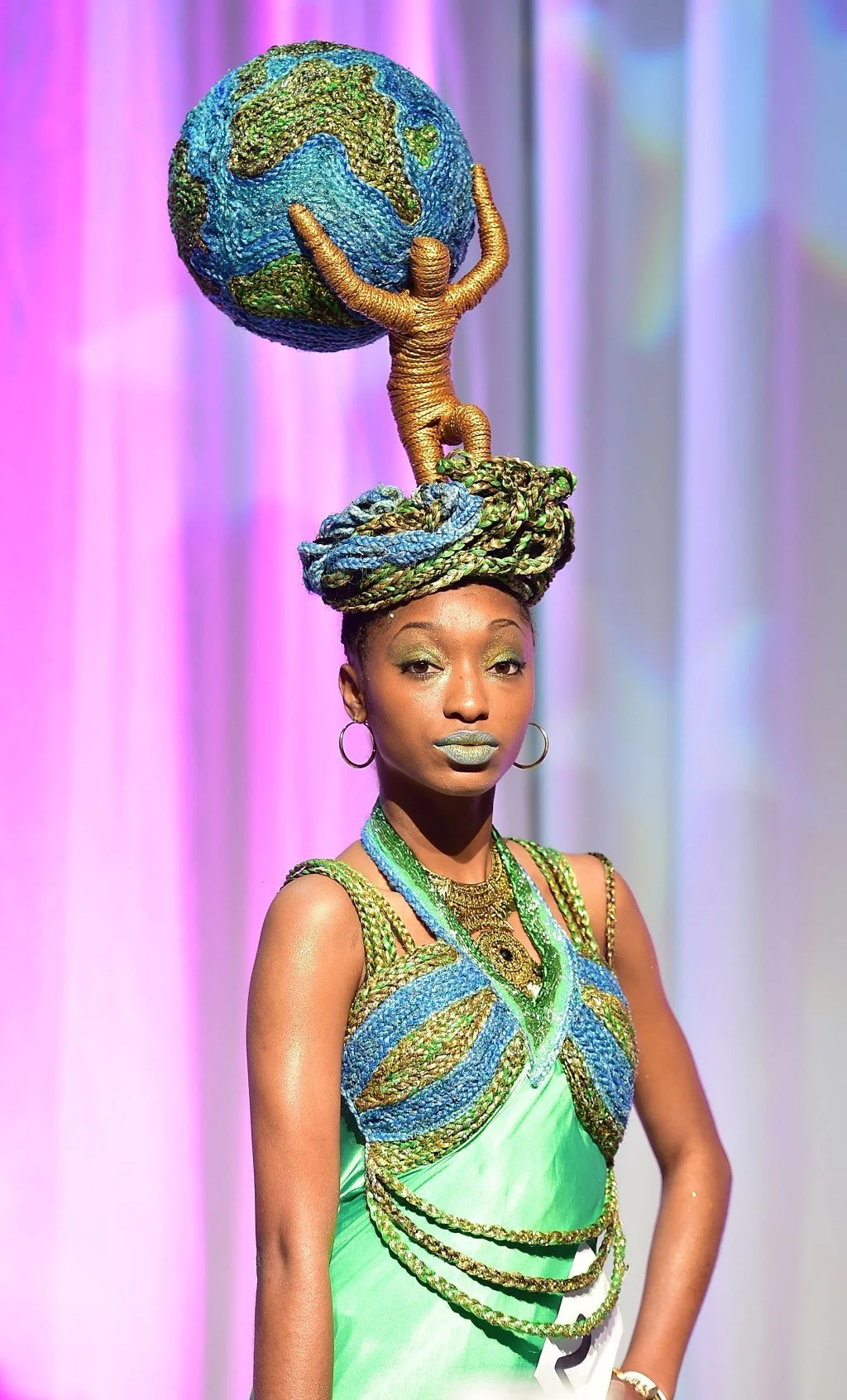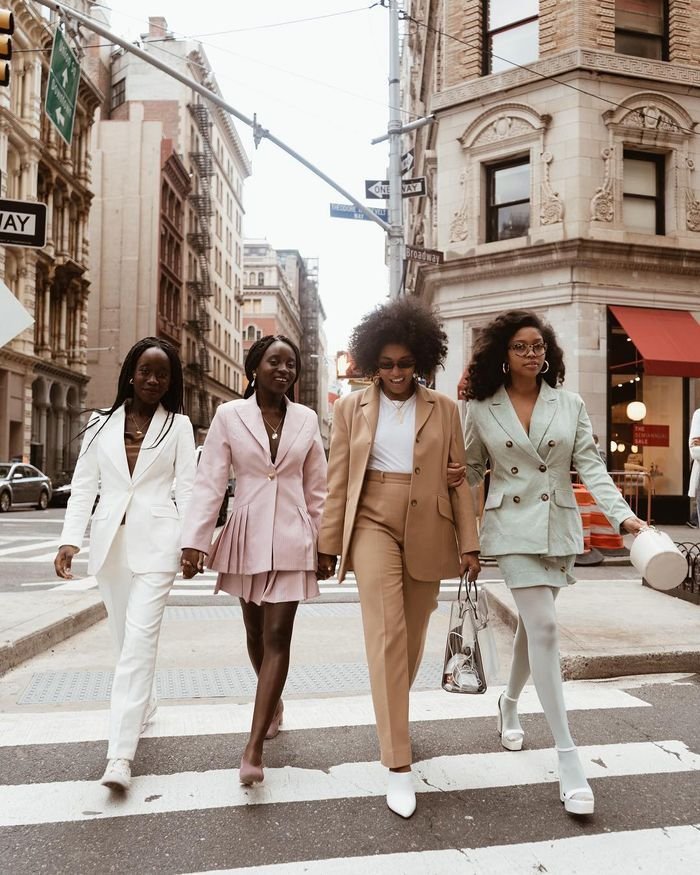Ghetto Fabulous
In today’s post, Glimmer 411 will be doing a deep dive into some of the more inventive parts of Black hair culture that’ve long been frowned-upon by the wider U.S. society. From hair shows to afros, we’ll be exploring the biases around our favorite parts of Black hair culture. Then, we’ll take a beat to examine the different ways hair discrimination pops up in creative and corporate circles.
Hair shows
What’s the first thing you think of when someone says “Hair Show”? Is it elaborate, gravity-defying dos that showcase everything from sculpted braids to manicured locs and vibrantly-colored coils? Maybe you think about nearly a centuries’ worth of creativity, empowerment, and entrepreneurship from Black hair stylists. If not, allow us to paint the picture for you.
Hair shows have long been a staple in the Black community, but their light wasn’t always noticed. The biggest hair show of them all, the Atlanta based Bronner Brothers Hair Show, had its inaugural event 71 years ago. Though the founder and the name are distinctly male, when Nathaniel Bronner founded his hair company and hair show, he was inspired by the artistry of his sister, a hairstylist, and other Black women in the industry.
His, and every other Black hair show, have served as a stage for Black female creativity and ingenuity in an area that is so important to our lives: hair. Each year the Bronner’s hair show not only holds space for an elite invite-only competition, but also offers budding hairstylists workshops on hair care, skin care and makeup, barbering, and key business skills like financial literacy, marketing and salon operations.
Despite the magic that happens at hair shows, the elaborate styles that are created have often been mocked as “ghetto” by Black and Non-Black spectators alike. Thankfully, helped by the positive foundation that was laid by B*A*P*S, more and more Black people outside of the hair industry are starting to see the true beauty behind the looks created in hair shows. Current celebrities like Cardi B and Megan Thee Stallion have helped push the narrative towards positivity with their own hair-show-esque wigs on lives, tours, and especially in their music video for W*A*P.
Colorful Wig and Hair
Wigs have long been a part of Black culture, dating back to ancient Egypt where nobility sported wigs dripping in gold, lace, jewels to flaunt their status. In a country that was so hot, being able to choose when to wear hair and when to be bald was a true luxury. In the U.S., formerly enslaved people began to wear wigs after being emancipated in order to fit into larger society, and Do-Wop groups in the 50’s and 60’s wore wigs to achieve a seamless but dramatic look across group members. In the 90’s, Lil Kim brought colorful wigs front and center, and over the following years other Black women followed in her footsteps. Despite the beauty in these women and the colors they wore, society told Black women, especially dark-skinned Black women, that these hairstyles were too “ratchet” and that dark-skinned women didn’t look good in colorful hair, which couldn’t be farther from the truth.
In the early 2000s, some Black women began to buy into these lies and backed away from colorful hair. But in recent years, society has become more accepting of the different ways Black women choose to wear their hair and the new generation of female rappers like Nicki and Cardi have empowered Black women of all shades to wear whatever color they want.
Afros
“Say it Loud I’m Black and I’m Proud” was a chant that took the Black community by storm thanks to James Brown. He created this culture shifting song in the heyday of the Afro, the 60s hairstyle that declared radical racial pride, self love, and political protest amongst Black teens. Very near the totally natural state of Black people’s hair, Afros of course weren’t completely new in the 60s and 70s. Afros actually originated in ancient African countries where the gravity-defying look was revered for seemingly bringing Black people closer to the divine.
Hair Discrimination in Creative Industries
Some of the people we look up to to help our hair culture continuously evolve and develop our stylists. But, did you know that many cosmetology students only get only 5-6 hours of instruction on textured hair care out of their entire 1600 hour long training program? Black cosmetology school alumni talk extensively about this huge disparity in the education around different hair textures.
If you go to a salon, POC stylists, especially Black and Hispanic stylists with textured hair themselves, are expected to be able to care for both straight and textured hair, a skill they often have to learn outside of class, while their counterparts are able to look at a Black customer and turn them away because they don’t know what to do or are “intimidated” by textured hair. And when other stylists do step up to work with Black clients, they often approach it from the school of thought that many cosmetology schools follow: the best way to service textured hair is to relax it.
This lack of textured hair care education not only hurts textured hair customers who can essentially be put on the back burner, but it also hurts stylists of all races. POC stylists are expected to carry a larger load, oftentimes with no extra pay while non-BIPOC stylists are missing an opportunity to give back to POC communities and diversify their own skills.
Several Black and POC beauticians across the country have taken solving this education gap into their own hands and have founded cosmetology schools of their own that educate stylists of creeds and colors how to work with natural hair in a way that promotes healthy curls and coils, and pays textured hair the respect it deserves.
While hairstylists are who we turn to when we need help maintaining our curls and coils, at Glimmer 411, we believe that every textured-hair person deserves the knowledge they need to reach their haircare goals. That’s why we launched CurlCupid, an online platform that not only helps connect you with the products we know will nourish your hair, but also provides you with an abundance of research to help you work with your porosity and other unique characteristics of your hair. If you’d like to unlock the secret to caring for your curls, try CurlCupid here.
Cultural Appropriation
From Kim K to Miley Cyrus, the cultural appropriation game is one we’ve all seen be played throughout the past decade and beyond. The past two summers, Adele’s Bantu knots and Jamaican bikini top threw Black Twitter users across the diaspora into a flurry. Many Black Americans were upset to see Adele wearing a style that is so culturally Black while several Jamaicans themselves didn’t think it was much of a problem.
Another case of cultural appropriation that still riles many of us up is Kim K and her “Boxer Braids”. For decades Black people had been looked down on for wearing cornrows, a style that can be identical to French braids if you only have two of them but has a long history in Africa and in Black populations world wide. Yet when individuals outside the black community wear cornrows and their loose hairs are seen as “cute” instead of “messy” or don “Boho chic” dreads that end up looking like the Grinch’s fingers while Black men are called “threatening” or “dirty” for their well kept locs. Cultural appropriation is a creative form of hair discrimination because other races use for fun and aesthetics what we value as pinnacles of our culture.
Hair Discrimination in Corporate America
The corporate world is a place where the double standard around who society thinks can wear Black hairstyles is the most noticeable. Black women especially are greeted with micro-aggressions or blatant racism when it comes to how they wear the hair that naturally grows from their heads.
These women often face comments about whether their hair is real or not or get stared down for wearing a simple puff to the office. While on the surface, some people may think that a few rude comments or looks really aren’t that bad, that’s not always the case. In truth the judgment of others usually has a tangible negative impact on the working lives of these women. They become scared to show up as who they are for fear of ridicule, which takes precious energy from their ability to have a happy and productive work life. In other cases these women may be ordered by their superiors to change their hair, or risk being fired or even social scorn by their coworkers.It should be said that adults aren’t the only ones who face hair discrimination in their professional lives, it’s also a very real issue in schools.
Discrimination in Education
Despite being so young, Black kids are no strangers to hair discrimination. Just this past year Nicole Pyles, a 16 year-old softball player from North Carolina, was ordered to get rid of the beads on her shoulder length braids or she’d be banned from playing. The game was already near the end of its second inning when the umpire told Pyles’ coach that her clear beads were blocking the number on the back of her jersey.
“I felt embarrassed and I most definitely felt disrespected,” she said. “I just felt like the world was just staring at me. Why me? Why anybody for that fact?”
The feeling Pyles describes is one that too many naturals can relate to.
CROWN Act
A steadily growing light at the end of the tunnel is the CROWN act, a bill spearheaded by Dove, the CROWN Coalition, and former California senator Holly J Mitchell. CROWN, or Create a Respectful and Open Workplace for natural hair, advocates for exactly what the acronym suggests: eradicating natural and protective style based discrimination in the corporate and academic world by giving these hairstyles statutory protection. Beginning in 2019, the CROWN act has been instituted in California, New York, 10 additional states and most major cities. Though the CROWN act passed nearly 2 years before Nicole Pyles was harassed at her softball game, the bill’s influence is only starting to grow and hopefully we’ll all be able to wear our crown of curls with ease.












![At Glimmer 411, our values are the heart of everything we do. Because YOU [our customers] are the top priority, we want to share them with you!
First up is ✨ INTEGRITY ✨ Swipe to find out more on how we plan to act on this value ➡️
—⠀
#G41](https://images.squarespace-cdn.com/content/v1/5c716cc590f9045c858a9fa6/1615484483997-5XKMEBQLCF4Q3TKP7KFI/image-asset.jpeg)

